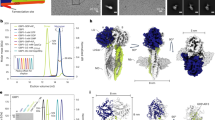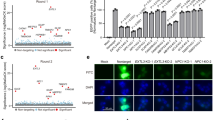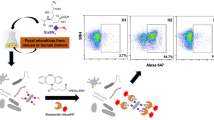Abstract
THE extraction of Gram-negative bacteria by the hot phenol method of Westphal1 yields a lipopolysaccharide along with considerable amounts of nucleic acid. The nucleic acid can be separated from the high molecular weight lipopolysaccharide by high-speed centrifugation, but to reduce the nucleic acid to a level of less than 2 per cent may require four or five sedimentations.
This is a preview of subscription content, access via your institution
Access options
Subscribe to this journal
Receive 51 print issues and online access
$199.00 per year
only $3.90 per issue
Buy this article
- Purchase on SpringerLink
- Instant access to full article PDF
Prices may be subject to local taxes which are calculated during checkout
Similar content being viewed by others
References
Westphal, O., Lüderitz, O., and Bister, F., Z. Naturforsch., 7, 148 (1952).
Webster, Marion E., Sagin, J. F., Landy, M., and Johnson, A. G., J. Immunol., 74, 455 (1955).
Author information
Authors and Affiliations
Rights and permissions
About this article
Cite this article
O'NEILL, G., TODD, J. Extraction of Nucleic Acid-free Lipopolysaccharides from Gram-negative Bacteria. Nature 190, 344–345 (1961). https://doi.org/10.1038/190344b0
Issue date:
DOI: https://doi.org/10.1038/190344b0
This article is cited by
-
Characterization of the antigens involved in serotyping strains ofCampylobacter jejuni by passive hemagglutination
Current Microbiology (1984)
-
Biodegradation of microbial lipopolysaccharides
Experientia (1973)
-
Serological studies with Agrobacterium radiobacter, A. tumefaciens, and Rhizobium strains
Archiv f�r Mikrobiologie (1971)
-
Preparation and immunochemical investigation ofShigella polysaccharide labelled with32P
Folia Microbiologica (1970)



